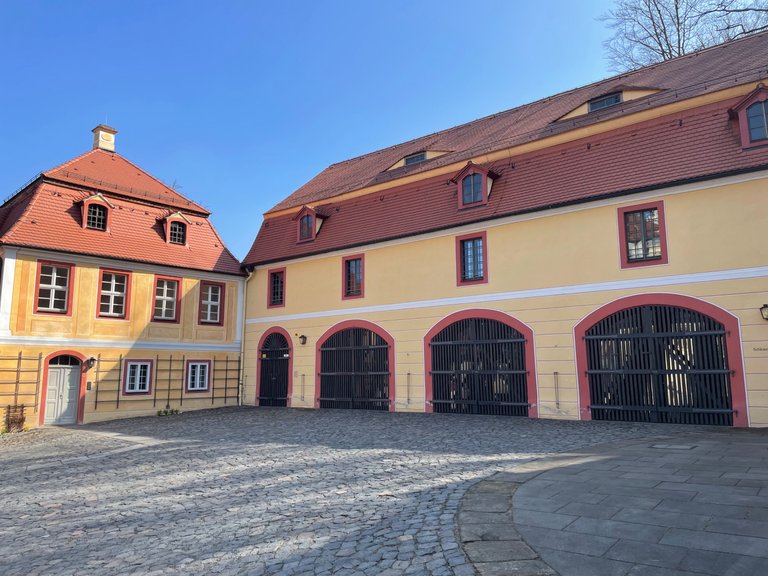
| Vor mehr als 800 Jahren begann archäologischen Funden nach die Geschichte von Schloss Weesenstein. Als mittelalterliche Wehranlage wurde sie zum ersten Mal 1318 urkundlich als »Weysinberg, dem huse«. erwähnt . Zu diesem Zeitpunkt gehörte Weesenstein zur reichsunmittelbaren Burggrafschaft Dohna. Beim Rundgang im Schloss, wird schnell klar das sie von "oben nach unten" gebaut wurde. Festsäle auf dem Dachboden, Pferdeställe in der fünften Etage, darunter die Kellergewölbe und noch ein Stockwerk tiefer gelegen die herrschaftlichen Wohnräume. Das Fundament des Schlossturms liegt fünf Etagen über dem Jahrhunderte später gebauten klassizistischen Wintergarten. | According to archaeological findings, the history of Weesenstein Castle began more than 800 years ago. As a medieval fortification, it was first mentioned in a document in 1318 as "Weysinberg, dem huse". At that time Weesenstein belonged to the castle county of Dohna. During the tour of the castle, it quickly becomes clear that it was built from "top to bottom". Festival halls in the attic, horse stables on the fifth floor, underneath the cellar vaults and still one floor below the manorial living quarters. The foundation of the castle tower is five floors above the classicist winter garden built centuries later. |
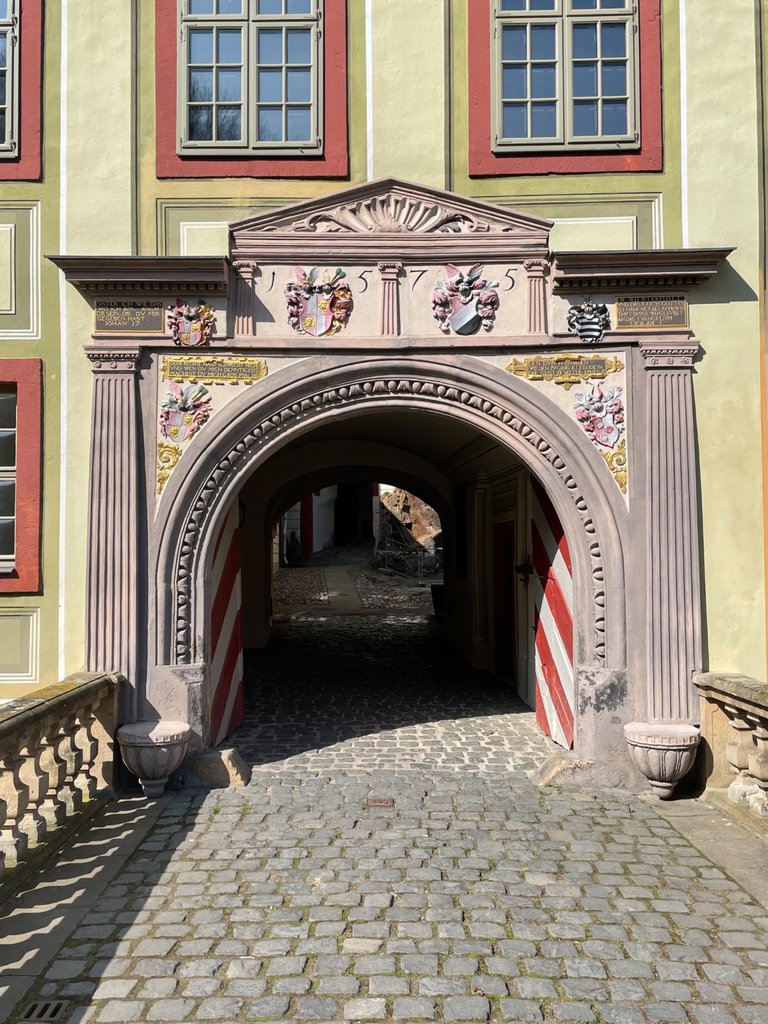


| Im Untergeschoss ist das Lebensgefühl des sächsischen Königshauses im 19. Jahrhundert noch lebendig. Denn im Jahre 1830 erwarb König Anton von Sachsen das Schloss und die Herrschaft Weesenstein. Er verlieh dem Schloss den Rang eines königlichen Hauses. Berühmtester Weesenstein-Besitzer war jedoch dessen Neffe, der spätere König Johann von Sachsen, der weniger als Staatsmann denn als Philosoph und Wissenschaftler bis heute große Achtung genießt. Unter dem Pseudonym Philalethes - Freund der Wahrheit - schuf er eine Übersetzung der „Göttlichen Komödie“ des mittelalterlichen Gelehrten Dante Alighieri, die noch heute als unübertroffene wissenschaftliche Leistung gilt. Reich mit originalen Möbeln und Tapeten ausgestattet Räume zeigen, wie man früher wohnte. Zwei Kapellen, eine kleine katholische König Johanns und eine barocke der Familie Bünau zeugen von der Religiosität der ehemaligen Besitzer. | In the basement, the lifestyle of the Saxon royal family in the 19th century is still alive. Because in 1830, King Anton of Saxony acquired the castle and the Weesenstein estate. He gave the castle the rank of a royal house. The most famous owner of Weesenstein, however, was his nephew, the later King John of Saxony, who is still held in high esteem today not so much as a statesman but as a philosopher and scientist. Under the pseudonym Philalethes - Friend of Truth - he created a translation of the "Divine Comedy" by the medieval scholar Dante Alighieri, which is still considered an unsurpassed scientific achievement. Rooms richly furnished with original furniture and wallpaper show how people used to live. Two chapels, a small Catholic one of King John and a Baroque one of the Bünau family testify to the religiousness of the former owners. |
| Nachdem das sächsische Königshaus Schloss und Herrschaft Weesenstein 1917 an den Großindustriellen Alwin Bauer verkauft hatte, wurde es stiller um das Schloss. Zunehmend zeigten sich Spuren des Verfalls. Die Erbin Bauers konnte das Schloss finanziell nicht unterhalten und veräußerte es. 1933 erwarb der Landesverein Sächsischer Heimatschutz mit Hilfe von Spenden der Bevölkerung die Weesensteiner Anlage und gründete ein Jahr später das bis heute bestehende Museum. Im Zweiten Weltkrieg wurden in den Räumen des Schlosses zahlreiche Dresdner Kunstschätze untergebracht. Nach 1945 waren Schloss und Park in Trägerschaft der Gemeinde Weesenstein. Heute sind Schloss und Park Weesenstein im Besitz des Freistaates Sachsen. | After the Saxon royal family sold the castle and Weesenstein estate to the industrial magnate Alwin Bauer in 1917, the castle became more quiet. Increasingly, traces of decay became apparent. Bauer's heiress was unable to maintain the castle financially and sold it. In 1933, the Landesverein Sächsischer Heimatschutz (Saxon Heritage Society) acquired the Weesenstein complex with the help of donations from the population and one year later founded the museum, which still exists today. During the Second World War, numerous Dresden art treasures were housed in the rooms of the castle. After 1945, the castle and park were in the ownership of the municipality of Weesenstein. Today, Weesenstein Castle and Park are owned by the Free State of Saxony. |
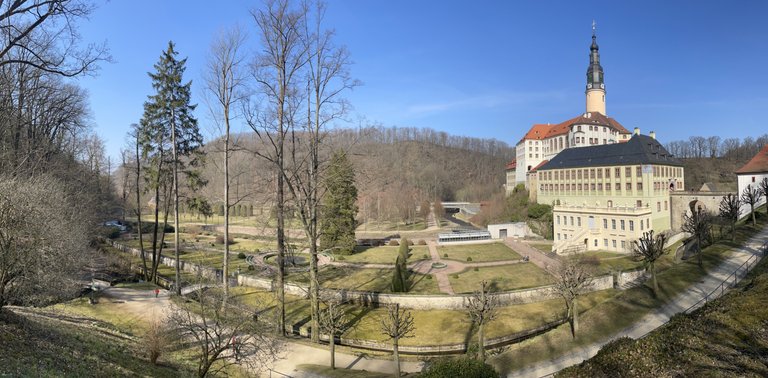
| Der kleine, barock anmutende Schlosspark lädt am Fuße des Schlossberges zum Spazieren und Verweilen ein. Die Müglitz teilt ihn in zwei Hälften. Vom Kleinen in den Großen Schlosspark führt die König-Johann-Brücke. Ein symmetrisches Wegenetz unterteilt den Park in verschiedene Erlebnisräume. Rosen- und Blumenrabatten zieren die Pfade. Schattenspendende Lindenalleen und mit Hainbuchenhecken gesäumte Wege leiten zu architektonischen Kleinoden. Zum "verschwundenen" Ebglischen Park gelangt man über eine romantischen Pfad auf dem bewaldeten Osthang des Müglitztales. Vom ehemaligen Jagdpavillon stehen nur noch die Grundmauern. Auf dem Weg dorthin sind noch kleine Sandsteinbrücken, Sitzbänke und Aussichtspunkte auf Schloss und Umland zu entdecken. | The small, baroque-looking castle park at the foot of the castle hill invites visitors to stroll and linger. The Müglitz river divides it into two halves. The King Johann Bridge leads from the Small to the Large Palace Park. A symmetrical network of paths divides the park into different experience areas. Rose and flower borders adorn the paths. Shady linden avenues and paths lined with hornbeam hedges lead to architectural gems. The "disappeared" Ebglische Park can be reached via a romantic path on the wooded eastern slope of the Müglitz valley. Only the foundation walls of the former hunting pavilion remain. On the way there, you can still discover small sandstone bridges, benches and viewpoints of the castle and the surrounding area. |

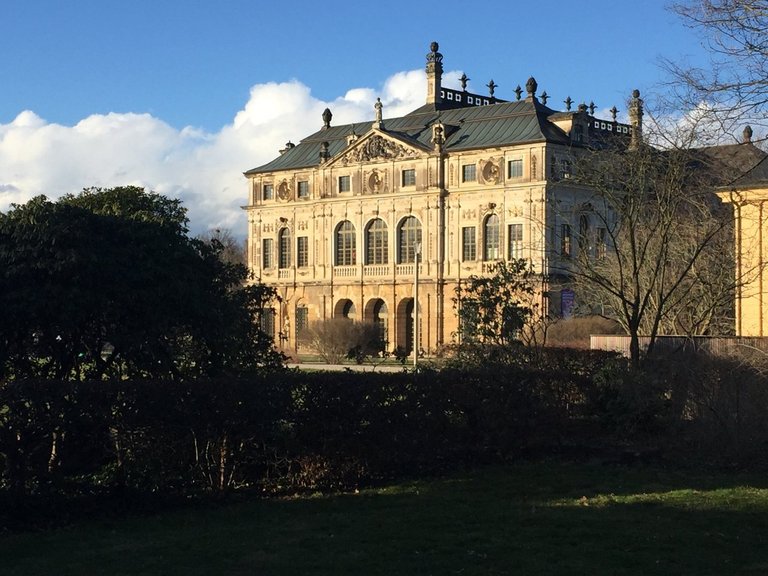 | 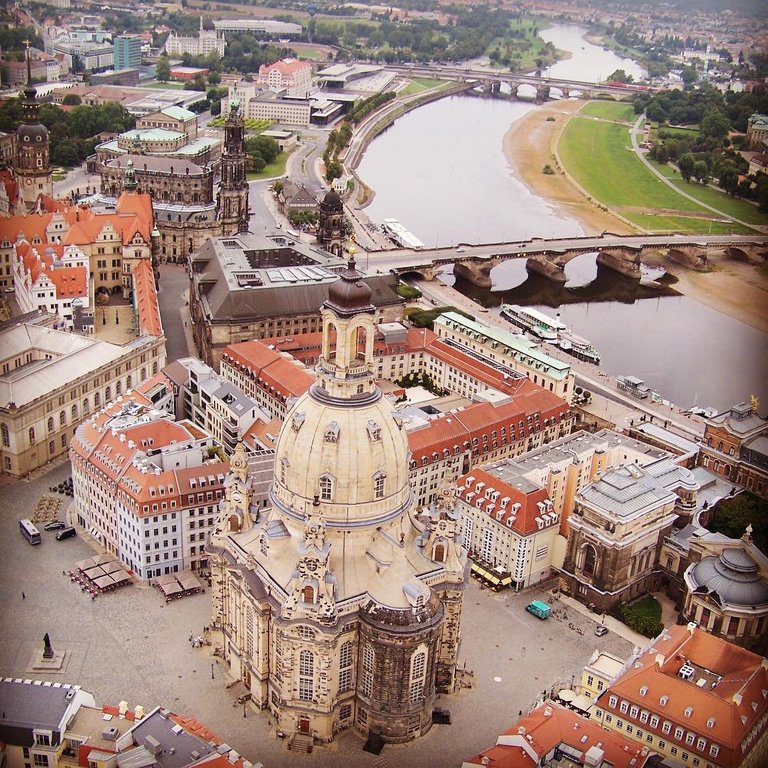 | 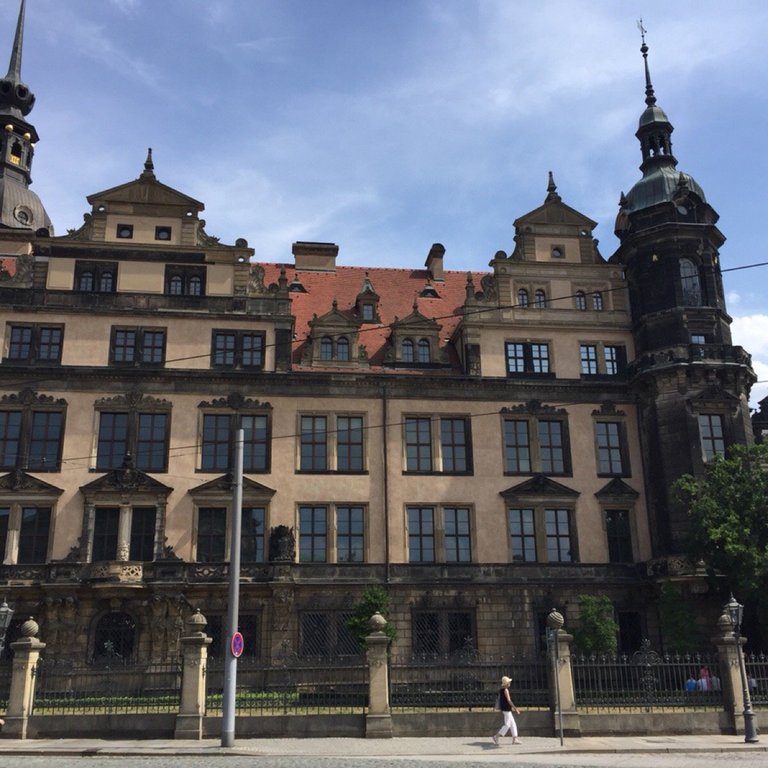 |
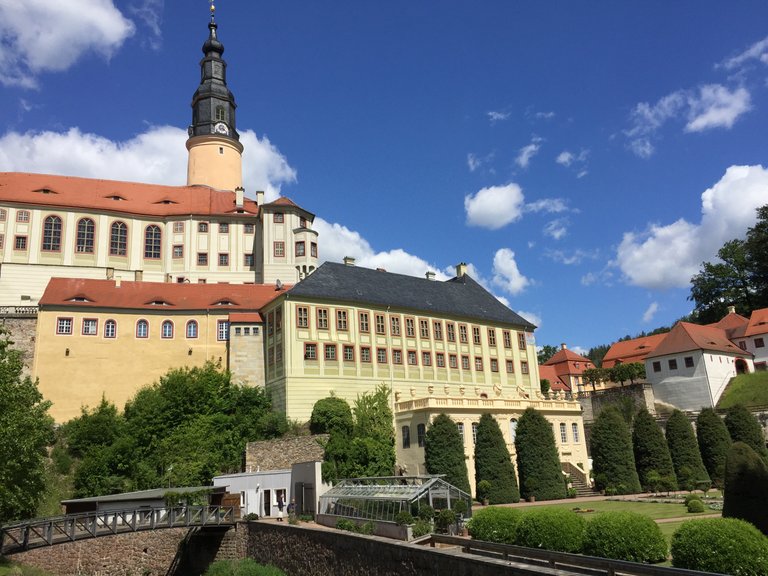 )
)
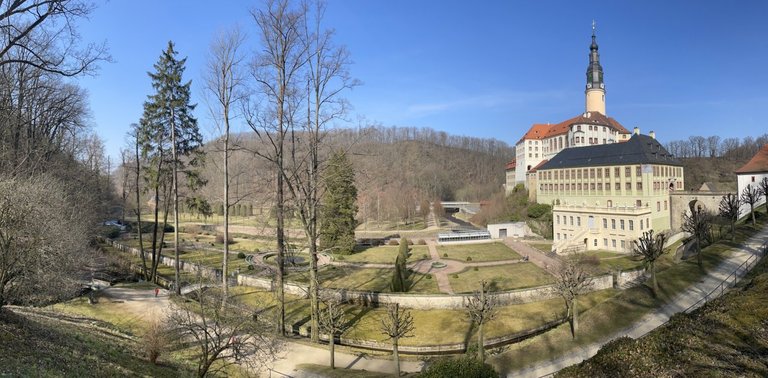
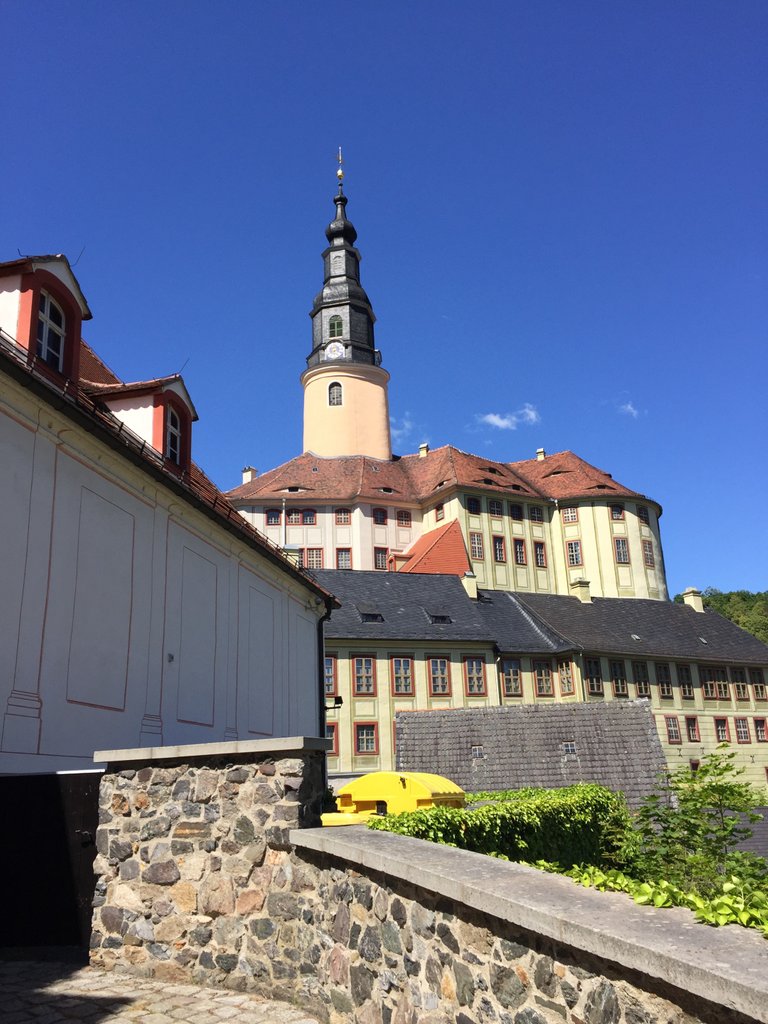
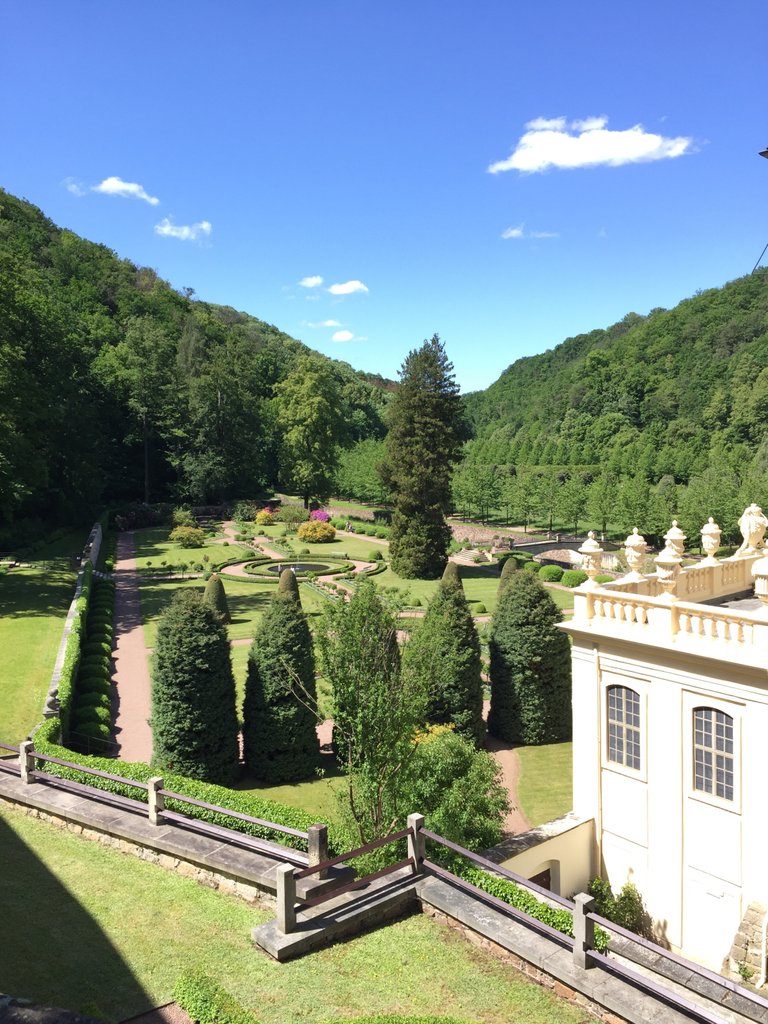
Sieht wunderschön aus. Hab ich während meiner Zeit im Osten leider übersehen.
Liegt auch wirklich sehr versteckt - lohnt sich aber. Es gibt sogar eine kleine Brauerei auf dem Schloss 😋
Hi city-of-dresden,
Join the Curie Discord community to learn more.
Ein traumhaftes Schloss mit einem atemberaubenden Park.
Das erinnert mich stark, an meinen letzen Prag Trip.
Rehived .
Mit Prag kann es Wesenstein wohl nicht ganz aufnehmen, aber eine Reise wert allemal!
Daily Travel Digest #1512.
Become part of our travel community:
- Join our Discord
- Learn more about our travel application
Hiya, @ybanezkim26 here, just swinging by to let you know that this post made it into our Honorable Mentions in Your post has been manually curated by the @pinmapple team. If you like what we're doing, please drop by to check out all the rest of today's great posts and consider supporting other authors like yourself and us so we can keep the project going!Thank you for your support!
Sehr schöne Dokumentation des Umlands. Eine der schönsten Städte in Deutschland 👍
Da sind wir uns einig!
Congratulations, your post has been added to Pinmapple! 🎉🥳🍍
Did you know you have your own profile map?
And every post has their own map too!
Want to have your post on the map too?